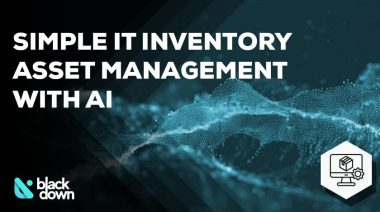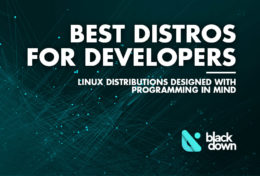If you’re building AI models or testing applications with sensitive data, you need synthetic data generation tools. The right tool makes the difference between a project that stalls on data privacy issues and one that moves forward confidently.
What is Synthetic Data Generation?
Synthetic data generation creates artificial datasets that mimic real-world data without containing actual personal information. The process uses advanced algorithms to learn patterns from real data, then generates new data points that follow the same statistical properties. This means you get useful data for AI training without the legal and ethical risks of using real customer information.
Synthetic data solves three critical problems: privacy regulations that block data access, scarce or imbalanced real datasets, and the need for realistic test data at scale.
Top 4 Synthetic Data Platforms
K2View Data Product Platform
K2View takes an entity-based approach that preserves data relationships across multiple systems. This platform excels at handling complex enterprise datasets where referential integrity matters.
K2View combines AI generation, rule-based logic, data masking, and entity cloning in one platform. You can generate synthetic data that maintains all connections between customers, orders, transactions, and related records. The platform integrates directly into CI/CD pipelines for automated test data generation.
Best for: Large enterprises with complex databases, especially in banking and telecommunications.
The catch: Requires significant setup and expertise. Pricing is custom and typically runs into six figures annually.
Synthea for Healthcare
Synthea generates realistic patient health records using disease progression models. I recommend this tool for anyone working with healthcare data.
Synthea simulates entire patient lifetimes, creating medical histories with diagnoses, medications, lab results, and encounters. The data follows clinical guidelines and epidemiological statistics. It outputs standard formats like HL7 FHIR and C-CDA.
Best for: Healthcare AI projects, medical research, and health IT system testing.
The catch: Only works for healthcare. It’s rule-based rather than learning from your specific data.
Pricing: Free and open source under MIT license.
Gretel.ai
Gretel stands out for its developer-first approach with strong API and SDK support. After NVIDIA acquired Gretel in 2025, the platform gained even more credibility and resources.
Gretel handles multiple data types including tabular, time-series, text, and images. The API-first design makes it easy to integrate synthetic data generation into ML pipelines. You can automate data generation as part of your workflow with just a few lines of code.
Best for: Development teams building AI applications who want to automate synthetic data generation.
The catch: Very large datasets can be challenging without proper configuration.
Pricing: Free tier available. Team plans start at $295/month plus usage-based charges.
Synthetic Data Vault (SDV)
SDV is an open-source Python library that gives you complete control over synthetic data generation. This works well when you need flexibility and don’t want vendor lock-in.
SDV includes multiple algorithms (CTGAN, TVAE, Gaussian Copula) that you can choose based on your data characteristics. It’s completely transparent, runs in your environment, and handles single tables, multi-table relational data, and time-series.
Best for: Data scientists and developers who want to build custom synthetic data pipelines.
The catch: Requires coding skills and ML knowledge. No GUI.
Pricing: Free open source (Business Source License). Enterprise version available.
Platform Comparison
| Feature | K2View | Synthea | Gretel.ai | SDV |
|---|---|---|---|---|
| Tabular Data | ✓ | ✓ | ✓ | ✓ |
| Time-Series | ✓ | ✓ | ✓ | ✓ |
| Images | ✗ | ✗ | ✓ | ✗ |
| Text/NLP | Limited | ✗ | ✓ | ✗ |
| Multi-Table | ✓ | ✓ | ✓ | ✓ |
| API Access | ✓ | ✗ | ✓ | ✓ |
| Differential Privacy | ✓ | ✗ | ✓ | ✓ (Enterprise) |
| GUI Interface | ✓ | ✗ | ✓ | ✗ |
| CI/CD Integration | ✓ | Limited | ✓ | ✓ |
| Open Source | ✗ | ✓ | ✗ | ✓ |
| Free Tier | ✗ | ✓ | ✓ | ✓ |
| Healthcare Focus | ✗ | ✓ | ✗ | ✗ |
| Enterprise Support | ✓ | ✗ | ✓ | ✓ (Paid) |
Making the Right Choice
- For healthcare projects: Start with Synthea. It’s free, purpose-built, and generates realistic medical data immediately.
- For development teams: Gretel offers the best API integration and supports multiple data types in one platform.
- For budget-conscious projects: SDV gives you enterprise-grade algorithms without licensing costs, though you’ll invest time instead of money.
- For large enterprises: K2View provides the most comprehensive solution if you need to handle complex multi-system data relationships.
Common Pitfalls to Avoid
- Trusting synthetic data blindly. Always validate that synthetic data preserves the patterns you need. Run statistical tests and compare model performance.
- Ignoring bias replication. Synthetic data inherits biases from source data. You need to actively check for and mitigate bias, not assume synthesis fixes it.
- Skipping privacy validation. Just because data is synthetic doesn’t guarantee privacy. Poorly configured generators can memorize and leak real data points. Look for tools that use noise injection or differential privacy to provide formal privacy guarantees.
Implementation Best Practices
Start with a pilot project on a small dataset. Establish clear quality metrics for what “good enough” means. Combine synthetic data with some real data to prevent model drift. Document your process for audits and troubleshooting.
Test synthetic data by training models on it and evaluating performance on real data. The gap tells you about data quality.
Final Thoughts
Synthetic data generation has moved from experimental to essential for AI development. The right tool depends on your specific needs: data types, scale, compliance requirements, and technical capabilities.
For most teams, starting with a platform that offers a free tier or open source option works best. Test thoroughly with your actual use cases before committing to enterprise licenses.
The investment in synthetic data tools pays off through faster development cycles, better compliance, and the ability to share data safely. Teams that adopt synthetic data early gain a significant competitive advantage in AI development.
Alexandra Chen
Related posts
Popular Articles
Best Linux Distros for Developers and Programmers as of 2025
Linux might not be the preferred operating system of most regular users, but it’s definitely the go-to choice for the majority of developers and programmers. While other operating systems can also get the job done pretty well, Linux is a more specialized OS that was…
How to Install Pip on Ubuntu Linux
If you are a fan of using Python programming language, you can make your life easier by using Python Pip. It is a package management utility that allows you to install and manage Python software packages easily. Ubuntu doesn’t come with pre-installed Pip, but here…











